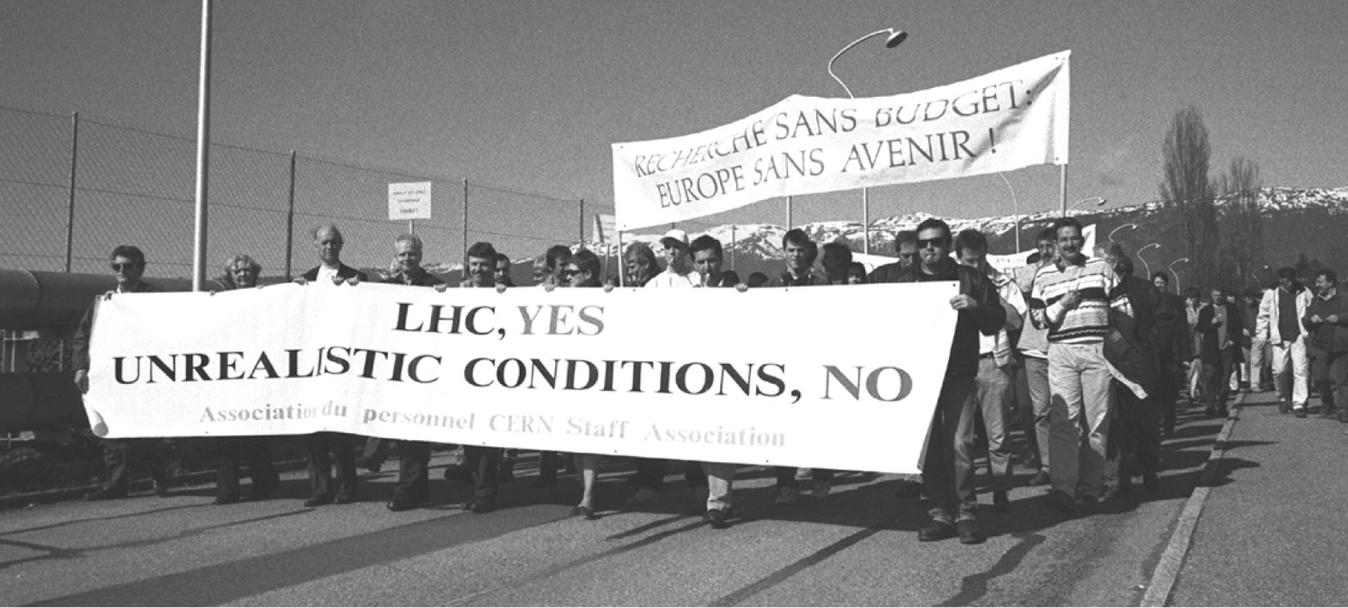CERN Outlines Plan to Pay for LHC
DOI: 10.1063/1.1485574
CERN management has sketched a preliminary plan to pay the extra costs of the Large Hadron Collider, a 14-TeV proton collider being built in a tunnel under the French–Swiss border. Under the proposal, unveiled at a meeting of CERN’s governing council in March, non-LHC science at the lab is cut to the bone. “The whole particle physics community is waiting for the LHC. We have to realize the project as fast as possible,” says Roger Cash-more, the lab’s director of research for collider programs.
Confidence in lab management—though not in the LHC—eroded last fall with the surprise revelation that the LHC’s costs had grown 850 million Swiss francs (roughly $511 million) above the original 2.6 billion Swiss francs (see Physics Today, December 2001, page 21
Such an increase appears unlikely, however. “We haven’t bottomed out on what [the lab] could save,” says Ian Halliday, who represents the UK on the CERN council. “The [management’s] proposal is one-half to one-third of what they need to save if they were to do it on schedule.” Adds Halliday, “To be brutal, I don’t think CERN ever had the money and manpower” for the neutrino beam to Gran Sasso (see Physics Today, February 2000, page 50
Only Switzerland has yet offered to help financially, by advancing 90 million Swiss francs from future dues. The CERN council also freed up 20 million of the 53 million Swiss francs (5% of the total annual budget) it froze last fall after hearing about the LHC overruns.
For their part, the lab’s staff are critical of CERN management and also say member states should help pay the extra price of the LHC. On 21 March, during the council meeting, some 1200 staffers took to the streets to air their views. “The first proposal on how to deal with the problem is very controversial,” says CERN physicist Friedrich Dydak. “There should be a 10–15% admixture of non-LHC projects that are interesting and vital—this keeps the lab alive.” The LHC is everyone’s top priority, adds Alvaro De Rújula, a CERN theorist, “but at what cost? Converting a successful laboratory into a mere accelerator-building company may be shortsighted and would jeopardize the future of high-energy physics not only in Europe, but in the whole world.”
At the council meeting, an external review committee delivered an oral interim report. Committee chair Robert Aymar, who heads the International Thermonuclear Experimental Reactor project, says the LHC is scientifically and technically sound. He also praises the CERN staff for their “competence and dedication.” As for the lab’s current straits, they go back to the 9.3% budget cut when the LHC was approved, says Aymar: “The consequences of the planned reduction in resources in staff and budget and the size and complexity of the LHC were not realistically taken into account.”
Next month, in its final report, Aymar’s committee will scrutinize CERN management and the impact of cuts on the lab’s non-LHC science program and will provide recommendations for financing the LHC. “When you are in a crisis, that’s the right time to consider all items,” says Aymar. “My wish will be to propose a compromise that goes with CERN’s missions and priorities.”

Staff and users demonstrated outside CERN on 21 March against the management’s approach to the current financial crisis.
CERN STAFF ASSOCIATION

More about the Authors
Toni Feder. tfeder@aip.org
